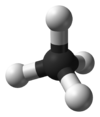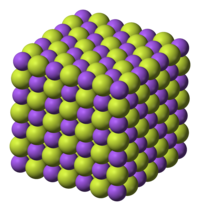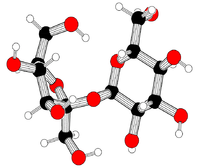1. Post a picture of three 3-dimensional Ball and Stick molecular models(choose your three favorite molecules) that you have created with common items around your home. Also post a molecular structure image(image from the web, of either a Kekule Structure or a Ball and Stick Model) and the IUPAC name of the molecule.
Ethane Model-made with game pieces and hot glue
Ball and stick model of ethane
IUPAC name-Ethane
Methane Model-made out of wood sticks and plastic balls

Ball and stick model of Methane
IUPAC name-Methyl Hydride
2. Post an image from the web, the chemical systematic (IUPAC) name, common name, and the molecule formula for 20 chemicals that you use or eat. Explore the ingredients of things like cosmetics and foods.

sodium flouride, IUPAC name: sodium flouride, NaF

sodium lauryl sulfate, IUPAC name: sodium lauryl sulfate, NaC12H25SO4

sucrose, IUPAC name: Saccharose; β-D-fructofuranosyl-(2→1)-α-D-glucopyranoside; β-(2S,3S,4S,5R)-fructofuranosyl-α-(1R,2R,3S,4S,5R)-glucopyranoside, C12H22O11

titanium dioxide, IUPAC name: titanium dioxide, TiO2

sodium hypochlorite, IUPAC name: sodium chlorate, NaClO

sodium nitrate, IUPAC name: sodium nitrate, NaNO3

phosphoric acid, IUPAC name: trihydroxidooxidophosphorus, H3PO4

ethanol, IUPAC name: ethanol, C2H6O

methane, IUPAC name: methyl hydride, CH4

butane, IUPAC name: butane, C4H10

octane, IUPAC name: octane, C8H18

phenol, IUPAC name: phenol, C6H6O

ammonium lauryl sulfate, IUPAC name: ammonium dodecyl sulfate, C12H29NO4S

sorbic acid, IUPAC name: (2E,4E)-hexa-2,4-dienoic acid, C6H8O2

propylene, IUPAC name: propene, C3H6

dibutyl phthalate, IUPAC name: dibutyl phthalate, C16H22O4

formeldahyde, IUCAP name: methanal, CH2O
3. Look over your molecules and the bonding characteristics, how many bonds does each of the following elements typically have? Carbon? Hydrogen? Oxygen?
Looking at all of the chemicals, carbon, hydrogen, and oxygen were the 3 that were the most common throughout all of them. There were a few different chemicals that would join in at the end, and sometiems oxygen wouldn't be there. But for the most part, carbon, hydrogen, and oxygen were the 3 most common throughout every single chemical provided in here.
4. What does IUPAC stand for?
IUPAC stands for the International Untion of Pure and Applied Chemistry.
5. As you explore ingredients, notice how everything around us is made up of chemicals consisting of atoms bound together into molecules. But what about companies that claim their products are chemical free! How can this be?
These companies that say that are finding a loophole. Although it says they are chemical free, if you look on the advertising, they say that they pack it with oxygen. Oxygen is considered a chemical, therefore stating that they still are using chemicals, just not in the way that people would think of it. They are also claiming that they use oils, but these oils have chemicals mixed together to create this one form of liquid. So in a way, they are still using chemicals, just not in a direct way that the buyer would consider. They are advertising wrong.


No comments:
Post a Comment